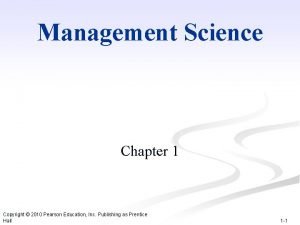Fertilizer Market Structure Uganda Fertilizer Supply Chain 1

- Slides: 1

Fertilizer Market Structure: Uganda Fertilizer Supply Chain 1: Represents both formal and informal commercial large agro dealers who have the financial resources and networks to not only buy their fertilizer from local importers, but also to source their fertilizers from neighboring Kenya and Tanzania. They sell to small and medium agro-dealers and to farmers directly. This channel also represents the illicit trade of subsidized fertilizers from Kenya where by fertilizer earmarked for Kenya subsidies is sold to both formal and informal importers of fertilizer Supply Chain 2: Formal commercial importers/distributors who source their fertilizers from overseas and neighboring Kenya and Tanzania and sell to both large scale commercial farmers (tea, sugar & flowers), agro dealers, as well as to individual farmers, NGOs, and Government and research institutions. That is, in a bid to increase their market share and be competitive these importers sell their fertilizer to anyone from the individual small farmer, to all sizes of agro dealers, to large scale commercial farmers Supply Chain 3: This channel consists of large commercial farms such as private estates (mainly tea, sugarcane and tobacco) who have the capability of importing specialized fertilizer products for use on their own farms directly from the international market (Europe, Kenya, South Africa) where they have established trading houses. However, they will also procure fertilizers from local importers occasionally in order to fill any shortfall. Supply Chain 3 accounts for approximately 15 -20% of the total imports. Therefore, the fertilizer market in Uganda is driven by the private sector mostly distributing to areas where high-value crops are grown, covering commercial and export-oriented sectors www. afap-partnership. org

